 |
| Photo by Dima Valkov |
In the AD&D rules (and really most D&D variants), a spellcaster can't cast a spell above their prescribed levels. As a rule of thumb, this is often a spell level of half their caster level. There are variations across classes and editions, but this is sufficient for today's discussion.
But what happens when a spellcaster tries to cast a spell of a higher level?
The 1st Edition DMG has some rules on pages 127-128 on scroll reading and failure, but nothing as far as I have found on similar rules for spellbooks. I am sure someone, somewhere, has said with all the authority a Rule Lawyer can muster that "I Shall Not Be Done!" and then quote something that someone else said somewhere else. Frankly, that is myopic and doesn't serve the players well.
So let me see if I understand the logic here...a group of adventurers are going to risk life, limb, possiblly even their immortal souls and sanity, for a chance of gold and glory. But reading a spell of slightly too high a level is verboten? No. I don't think so. Granted, it should come with consequences.
Here some rules I have been picking at. They supersede the ones found in the DMG.
Casting Higher Level Spells
A spellcaster is typically prohibited from casting spells to which they have no mastery of. Higher level spellcasting is the domain of higher level spellcasters and the untrained mind can not recall the information adequately to even attempt a spellcasting, that is even when they can understand the arcane or occult formulae at all.
But there are times, dire times, in which a spellcaster might want to attempt the dangerous casting of a spell to which they have no knowledge or skill of. This maybe attempted by reading a scroll or directly from a spellbook. There is a high chance of spell failure, and a chance of unintended and catastrophic results. There is also a chance that the spell works as intended and desired. This could be the difference between life and death, or a fate even worse.
To determine the chance of success, start with the Caster level.
Roll under chance of Success on d%.
Base Chance of Success = 5% per level
Table: Spell Casting Modifiers
| Situation | Modifier |
|---|---|
| Spell is of caster's own class list | +10% |
| Spell is of allied Witch tradition (Classical, Craft of the Wise, etc.) | +5% |
| Spell belongs to a related arcane class (Magic-User ↔ Illusionist) | -5% |
| Spell belongs to a related occult class (Witch ↔ Warlock) | -10% |
| Spell belongs to an entirely different class (Divine/Cleric/Druid/etc.) | -15% |
| Spell is 1 level above caster's maximum | +5% |
| Spell is 2 or more levels above caster’s maximum | +10% per spell level |
| Spell of opposing alignment/Patron | -25% |
| Spell of opposing school (arcane only) | -10% |
01 always succeeds.
00 (100) always triggers a Major Backlash (roll twice on the d100 table).
Failure results are detailed in the tables below. Scrolls and Spellbooks use different tables. Any casting, success, failure, or otherwise, results in the destruction of the spell being used.
Table: Scroll Spell Failure / Minor Backlash
| d100 | Result |
|---|---|
| 01–20 | Fizzle: Spell fails harmlessly; scroll turns to ash. |
| 21–25 | Harmless Surge: Hair stands on end; tiny sparks fly. No damage. |
| 26–30 | Minor Burn: Caster takes 1d4 damage. |
| 31–33 | Flashblind: Caster blinded for 1d4 rounds. |
| 34–36 | Reversed Spell: Effect targets caster. |
| 37–40 | Wild Targeting: The spell affects a random creature within 30 ft. |
| 41–43 | Spell Fragment: Only the first or last portion of the spell manifests (DM choice). |
| 44–46 | Partial Success: Spell works at half-strength, half duration, or half area. |
| 47–49 | Echo: The spell takes effect 1d4 rounds later. |
| 50–52 | Arcane Whiplash: Caster cannot cast spells for 1d3 rounds. |
| 53–55 | Magic Drain: Lose one randomly chosen prepared spell (or witch spell-slot) for the day. |
| 56–58 | Item Flare: A magic item worn must save vs. Spells or malfunction once. |
| 59–60 | Sour Ink: A random scroll in caster’s possession corrodes (save or be ruined). |
| 61–63 | Spirit Attention: A minor invisible spirit observes for 1 turn; 10% chance it interferes. |
| 64–66 | Vermin Sign: Normal vermin swarm briefly; 10% chance of ruining random gear or potions. |
| 67–69 | Etheric Disruption: All spellcasting within 10 ft suffers –2 to initiative for 1 turn. |
| 70–72 | Foul Omen: Caster takes –1 on all rolls for 1 hour. |
| 73–75 | Spell Echoes Elsewhere: The spell manifests 100–1000 ft away at random. |
| 76–78 | Vitality Leak: Caster loses 1d3 points of Constitution for 1 turn (fatigue aura). |
| 79–81 | Arcane Whip: Caster is knocked prone. |
| 82–84 | Shadow Flicker: Something mimics the caster’s shadow for 1 turn. Harmless but unsettling. |
| 85–87 | Planar Draft: A chill wind blows from nowhere; undead within 1 mile sense the caster. |
| 88–90 | Fail + Attract Minor Monster: Equivalent to a random monster roll. |
| 91–95 | Arcane Pulse: 1d6 damage to all creatures within 10 ft (save half). |
| 96–99 | Severe Shock: Caster stunned 1d4 rounds; lose 1d3 prepared spells. |
| 100 | Catastrophic: Roll once on the Major Backlash Table below. |
Table: Spellbook Spell Failure / Major Backlash
| d100 | Result |
|---|---|
| 01–05 | Psychic Burn: 1d6 damage per spell level attempted; stunned 1 round. |
| 06–08 | Arcane Fever: –2 to all rolls, no spellcasting for 24 hours. |
| 09–10 | Witch-Marking: A permanent visible magical mark appears; –1 Charisma. |
| 11–13 | Memory Leak: Lose 1 prepared spell of each level. Highest levels first. |
| 14–15 | Reversal Cascade: Every beneficial effect on the caster reverses for 1 turn. |
| 16–18 | Wild Elemental Surge: Take 1d8 acid, cold, fire, or lightning damage (random). |
| 19–21 | Voice of the Spirits: Caster hears whispers for 1d6 hours. -2 on all rolls |
| 22–24 | Spirit Intrusion: Attempted possession (save vs. Spells or controlled 1d6 rounds). |
| 25–27 | Fates Displeasure: –1 to saving throws for 24 hours; omen appears. |
| 28–30 | Arcane Wound: Permanent –1 Constitution unless cured by heal, wish, or witch ritual. |
| 31–33 | Temporal Skip: Caster vanishes for 1d4 rounds and reappears confused for 1 round. |
| 34–35 | Spell Implosion: Lose all prepared spells of the highest level available. |
| 36–37 | Mana Scour: Drop to 0 spells; cannot cast for 12 hours. Spells return. |
| 38–39 | Grimoire Corruption: A spell in the caster’s book becomes unusable for 1 day. (Divine reroll) |
| 40–41 | Pain Curse: For 24 hours, all damage dealt to the caster is increased by +1 per die. |
| 42–44 | Aura Taint: Detect Magic/Good/Evil shows the caster as a random alignment for 1 day. |
| 45–47 | Attract Lesser Demon/Spirit (DM chooses): Negotiation may be required. |
| 48–49 | Blood Price: Lose 1d4 Strength for 24 hours. |
| 50–52 | Summoning Echo: A random outsider peers through briefly; 5% chance it steps through. |
| 53–55 | Arcane Feedback: Caster and all within 10 ft take 2d6 damage (save half). |
| 56–57 | Magic Reversal: The spell goes off but affects the absolute worst possible target. |
| 58–59 | Astral Flicker: Caster is partially astral for 1 turn; incorporeal but cannot act. |
| 60–61 | Possessed Insight: Gain a vision of the future, but also take 2d6 psychic damage. |
| 62–63 | Hexblight: Caster cannot benefit from magical healing for 24 hours. |
| 64–65 | Nightmare Veil: The next time the caster sleeps, they suffer a draining dream (lose 1d6 hp). |
| 66–67 | Witchfire Backlash: Caster burns with blue flame; take 1d6 damage and frighten nearby animals. |
| 68–69 | Feral Mind: –4 Intelligence and –4 Wisdom for 1 hour. |
| 70–72 | Undead Attraction: The nearest undead (within 1 mile) senses and seeks the caster. |
| 73–74 | Patron Claim (Occult only): The Patron asks a service (within 1 week). Refusal imposes -2 to all rolls. (Arcane/Divine reroll) |
| 75–76 | Contagion of Chaos: 10% chance for each magic effect within 30 ft to misfire. |
| 77–78 | Spell-Eater Aura: For 1 hour, any spell cast within 10 ft automatically fails. |
| 79–80 | Dimensional Shudder: Teleportation near caster is impossible for 1 day. |
| 81–82 | Grave Chill: Caster’s touch deals 1 cold damage per hit die for 10 minutes. |
| 83–84 | Shadow Doppelganger: A hostile shadow-copy of the caster manifests (HD = caster level –2). |
| 85–87 | Blood-Ink Words: Any further spellcasting today causes 1 hp damage per spell level. |
| 88–89 | Wards Collapse: Any magical protections on caster immediately expire. |
| 90–91 | Forbidden Knowledge: Gain a secret insight (DM chooses) but take 2 permanent hp loss. |
| 92–93 | Cataclysmic Surge: 3d6 force damage in 20 ft radius; save half. |
| 94–95 | Deathly Pallor: Caster appears undead to detection spells for 1 week. |
| 96–97 | Spellstorm: Roll a random spell of each level the caster can cast; all activate at once. |
| 98–99 | Arcane Rupture: Caster must save vs. Death Magic or die (success = 3d10 damage). |
| 100 | Grand Catastrophe: Roll twice more; both effects apply; the attempted spell explodes violently. Spellbook destroyed. |
Any roll that results in an ability being reduced to 0 or below results in the death of the caster. Saving throw vs Death will instead place the caster in a coma until they are restored.
--
With the chances of death, destruction, and the potential loss of an entire spellbook, it is easy to see why many spellcasters treat casting higher level spells as something "they just can't do."








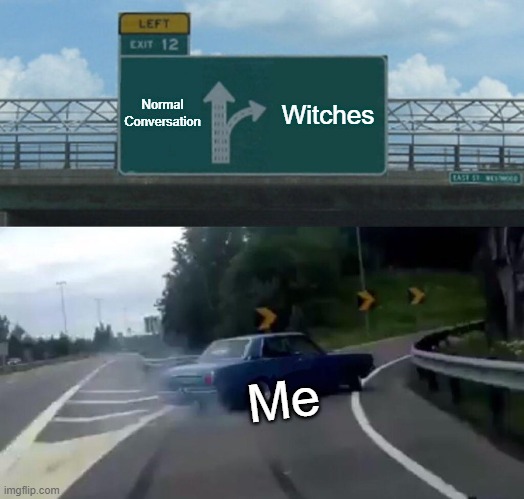


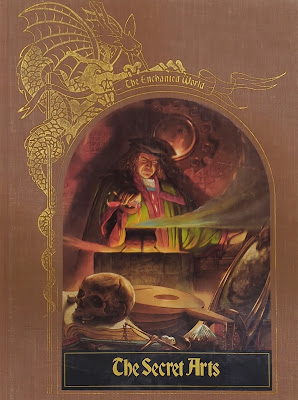
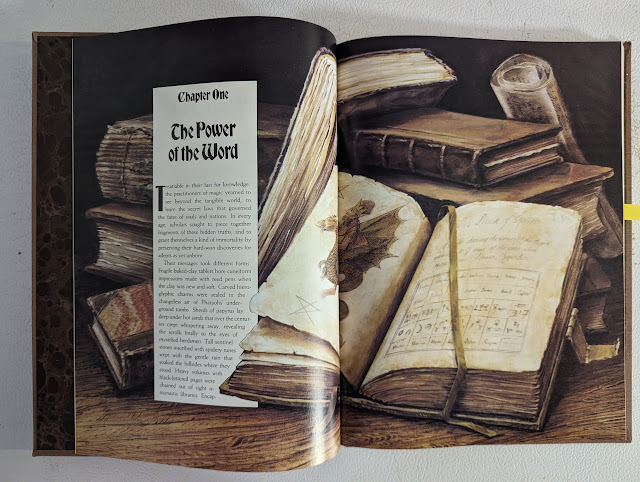



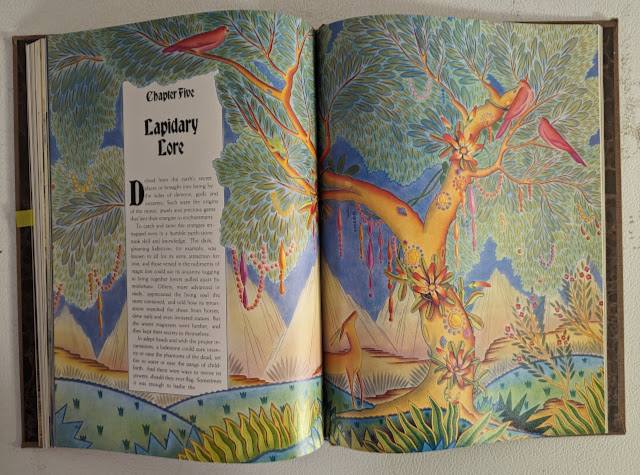


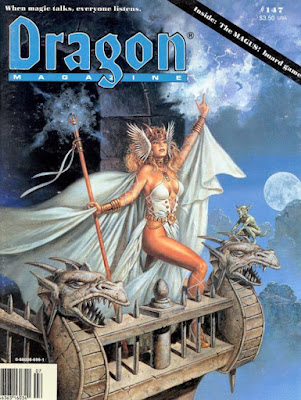




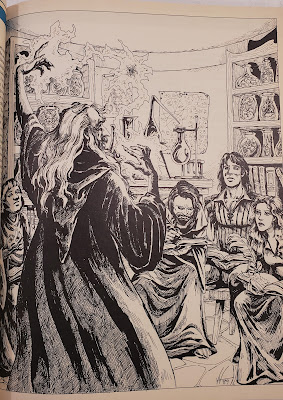
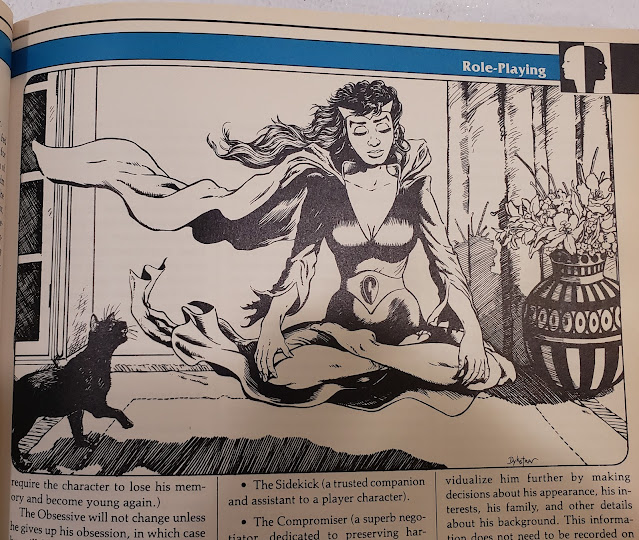



.jpg)






